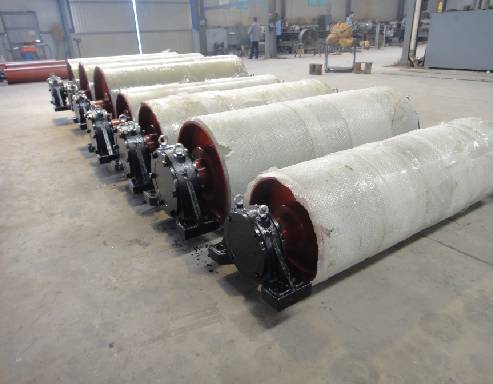 Afrikaans
Afrikaans  Albanian
Albanian  Amharic
Amharic  Arabic
Arabic  Armenian
Armenian  Azerbaijani
Azerbaijani  Basque
Basque  Belarusian
Belarusian  Bengali
Bengali  Bosnian
Bosnian  Bulgarian
Bulgarian  Catalan
Catalan  Cebuano
Cebuano  Corsican
Corsican  Croatian
Croatian  Czech
Czech  Danish
Danish  Dutch
Dutch  English
English  Esperanto
Esperanto  Estonian
Estonian  Finnish
Finnish  French
French  Frisian
Frisian  Galician
Galician  Georgian
Georgian  German
German  Greek
Greek  Gujarati
Gujarati  Haitian Creole
Haitian Creole  hausa
hausa  hawaiian
hawaiian  Hebrew
Hebrew  Hindi
Hindi  Miao
Miao  Hungarian
Hungarian  Icelandic
Icelandic  igbo
igbo  Indonesian
Indonesian  irish
irish  Italian
Italian  Japanese
Japanese  Javanese
Javanese  Kannada
Kannada  kazakh
kazakh  Khmer
Khmer  Rwandese
Rwandese  Korean
Korean  Kurdish
Kurdish  Kyrgyz
Kyrgyz  Lao
Lao  Latin
Latin  Latvian
Latvian  Lithuanian
Lithuanian  Luxembourgish
Luxembourgish  Macedonian
Macedonian  Malgashi
Malgashi  Malay
Malay  Malayalam
Malayalam  Maltese
Maltese  Maori
Maori  Marathi
Marathi  Mongolian
Mongolian  Myanmar
Myanmar  Nepali
Nepali  Norwegian
Norwegian  Norwegian
Norwegian  Occitan
Occitan  Pashto
Pashto  Persian
Persian  Polish
Polish  Portuguese
Portuguese  Punjabi
Punjabi  Romanian
Romanian  Russian
Russian  Samoan
Samoan  Scottish Gaelic
Scottish Gaelic  Serbian
Serbian  Sesotho
Sesotho  Shona
Shona  Sindhi
Sindhi  Sinhala
Sinhala  Slovak
Slovak  Slovenian
Slovenian  Somali
Somali  Spanish
Spanish  Sundanese
Sundanese  Swahili
Swahili  Swedish
Swedish  Tagalog
Tagalog  Tajik
Tajik  Tamil
Tamil  Tatar
Tatar  Telugu
Telugu  Thai
Thai  Turkish
Turkish  Turkmen
Turkmen  Ukrainian
Ukrainian  Urdu
Urdu  Uighur
Uighur  Uzbek
Uzbek  Vietnamese
Vietnamese  Welsh
Welsh  Bantu
Bantu  Yiddish
Yiddish  Yoruba
Yoruba  Zulu
Zulu Chevron Design Wing Pulley for Enhanced Performance in Conveyor Systems
Understanding the Chevron Wing Pulley Design, Function, and Applications
The Chevron wing pulley is a vital component in various industrial applications, especially in the transport and processing of bulk materials. As the modern industry relies heavily on efficient conveyor systems, understanding the unique features and advantages of this type of pulley can provide insights into its essential role in enhancing operational efficiency.
Design Features
The Chevron wing pulley is characterized by its distinct wing-shaped design, which sets it apart from traditional flat pulleys. This design includes two angled wings that extend from the central hub, creating a V-shape. The angles and the orientation of the wings are specifically engineered to reduce material buildup and slippage. By having a chevron-like formation, the pulley effectively channels material toward the center, allowing for a more efficient transfer of bulk loads.
One of the foremost advantages of this design is its capability to minimize the risk of carryback. Carryback refers to the material that sticks to the conveyor belt and is not fully discharged at the end of the conveyor line. This residue can lead to reduced system efficiency, increased maintenance needs, and heightened operational costs. The Chevron wing pulley, with its innovative shape, helps to shed this material, ensuring cleaner operational conditions and minimizing the need for frequent clean-ups.
Functionality
The functionality of the Chevron wing pulley is closely linked to its design. The wings create a more pronounced surface area, allowing for improved traction between the pulley and the conveyor belt. This increased traction is crucial for heavy-duty applications where loads can be dynamic and fluctuating. In such cases, the ability of the pulley to maintain a consistent grip on the belt ensures that the material being transported is moved efficiently and safely.
chevron wing pulley

Additionally, the Chevron wing pulley contributes to prolonging the lifespan of conveyor belts. The pulley’s construction can help reduce wear and tear on the belt surface due to its ability to minimize slippage. When the belt does not regularly slip over the pulley, it suffers far less damage, leading to extended operational life and lower replacement costs over time.
Applications
The applications for Chevron wing pulleys are vast and varied. They are commonly used in industries such as mining, agriculture, recycling, and material handling. In the mining sector, for instance, they are ideal for handling heavy materials such as coal, ore, and minerals. The Chevron wing design allows for efficient handling of these bulk materials, significantly improving productivity and safety.
In agriculture, Chevron wing pulleys are found in grain handling systems, where they facilitate the movement of harvested crops. Their capacity to mitigate carryback is particularly beneficial in agricultural settings, where ensuring that all harvested materials are efficiently transferred to storage or processing facilities is critical.
The recycling industry also benefits from Chevron wing pulleys, as they help in the efficient transport of mixed materials, minimizing contamination during the handling process. Their robust design ensures that even the most challenging materials can be moved reliably and efficiently.
Conclusion
In conclusion, the Chevron wing pulley exemplifies innovation in industrial design, combining functionality with efficiency to tackle the unique challenges faced by various sectors. Its distinctive wing design minimizes carryback, enhances belt traction, and extends the life of conveyor systems, making it a vital component in bulk material handling. As industries continue to evolve and demand more efficient solutions, the Chevron wing pulley stands out as an essential tool in optimizing operations, thereby driving productivity and reducing costs. Embracing such advanced designs is key to fostering sustainable and efficient industrial practices.
-
Revolutionizing Conveyor Reliability with Advanced Rubber Lagging PulleysNewsJul.22,2025
-
Powering Precision and Durability with Expert Manufacturers of Conveyor ComponentsNewsJul.22,2025
-
Optimizing Conveyor Systems with Advanced Conveyor AccessoriesNewsJul.22,2025
-
Maximize Conveyor Efficiency with Quality Conveyor Idler PulleysNewsJul.22,2025
-
Future-Proof Your Conveyor System with High-Performance Polyurethane RollerNewsJul.22,2025
-
Driving Efficiency Forward with Quality Idlers and RollersNewsJul.22,2025





























